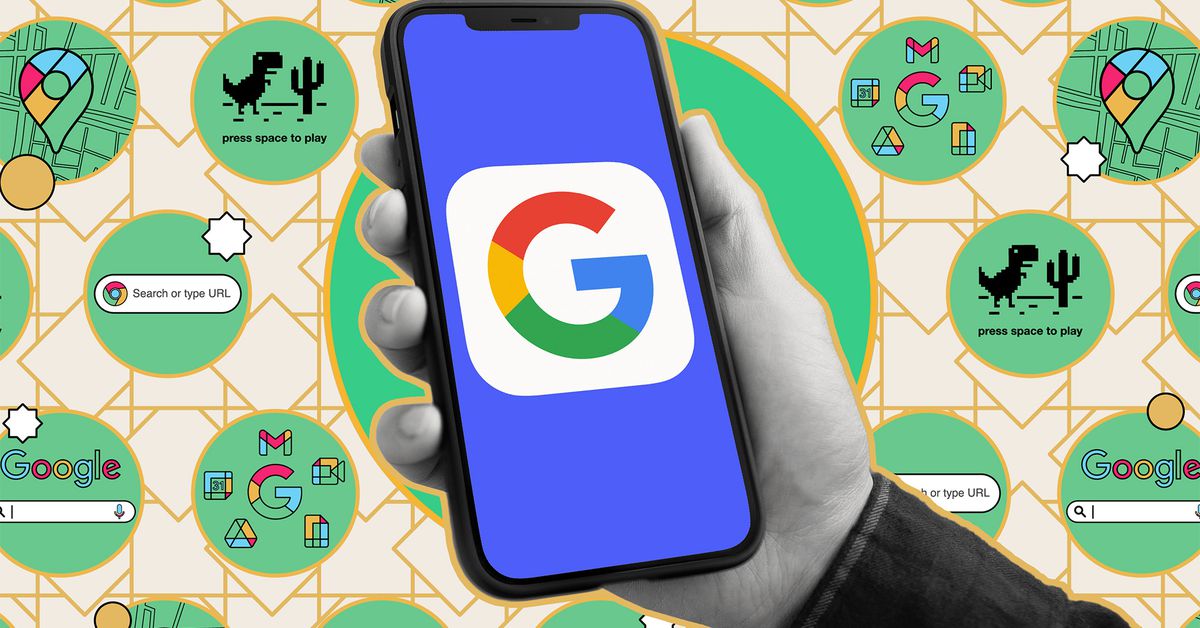/cdn.vox-cdn.com/uploads/chorus_asset/file/23952254/HT012_google_00010.jpg)
Think about everything you do across Chrome, Gmail, Google Maps, YouTube, and everything else Google owns, and you get some idea of how much data you’re giving up to the company each day. For most of us, it’s… a lot.
Whether or not you think the data collection and targeted advertising is a worthwhile trade for the free apps you get in return, Google does at least provide a comprehensive online dashboard you can use to see some of what’s being gathered.
You can use it to delete everything Google has already collected, stop it from collecting anything in the future, or automatically delete your data after a set period (like three months). You can also use these features to clear the records if you’re planning to delete your Google account — though the process of deleting it should also wipe all of the data associated with your account.
Here’s how to use the options available to you.
a:hover]:shadow-highlight-franklin dark:[&>a:hover]:shadow-highlight-franklin [&>a]:shadow-underline-black dark:[&>a]:shadow-underline-white”>Find your data
Getting started is pretty easy: Open your Google account page in a web browser of your choice, signing in if you need to. From this screen, you can see your Google subscriptions, the devices you’re signed in to with your Google account, and the passwords you might have saved, among other information.
Right now, we’re interested in data.
- Click Data and privacy on the left.
- Look for History settings. It is split up into three main categories: Web and apps, location, and YouTube.
- Click the My Activity button at the bottom of that section to see a complete list of this data. You’ll see everything you’ve done that’s been logged in Google products, starting with what’s most recent.
- Select Filter by date & product to limit the results to certain date ranges or certain apps.
- To remove a filter you’ve applied, click the X next to it at the top of the list.
- Click on any entry in the list to see more details about it if they’re available. You can open YouTube videos you’ve watched, for example, or websites you’ve visited.
a:hover]:shadow-highlight-franklin dark:[&>a:hover]:shadow-highlight-franklin [&>a]:shadow-underline-black dark:[&>a]:shadow-underline-white”>Delete your data
When it comes to data that’s already been collected and logged by Google, you can erase it in a few different ways.
- If you’re looking at the full activity list, click Delete (to the right of the filter). You can wipe records from the last hour, the last day, or within a custom range. You can also click Always to delete everything.
- If you’ve filtered the list by date or product, click Delete results: this wipes everything that matches the filter.
- Whether or not the list is filtered, you can click the X next to any single entry to delete it.
It’s handy to have this central repository of all your data available via one web portal, but you can find some types of data in other places, too. You can delete your web activity from inside Chrome as long as you’re signed in to Google, for example, or get at your YouTube watch history through the YouTube website.
a:hover]:shadow-highlight-franklin dark:[&>a:hover]:shadow-highlight-franklin [&>a]:shadow-underline-black dark:[&>a]:shadow-underline-white”>Auto-delete and turn off data collection
If you want Google to auto-delete your data or stop collecting data altogether, you need to use the three categories we mentioned earlier: Web and apps, location, and YouTube.
From the activity list, click Web & App Activity, Location History, or YouTube History. The next options screen you’ll see is very similar across all three categories:
- Click Turn off to stop collecting data in this particular category. If you select this option, you can choose to either Turn off (to keep anything collected thus far) or Turn off and delete activity.
- If you choose to delete data, you’ll be shown a preview of what’s getting erased before you confirm the action.
- Further down the page, select Choose an auto-delete option to have the data in this category wiped after a certain time: 3 months, 18 months, or 36 months.
You’ll also see some sub-settings on these screens, too, such as searches you run on YouTube or voice and audio activity that might be collected through your interactions with Google Assistant.
There are obviously some compromises to think about here. If you’ve been checking out a particular coffee shop on Google Maps, it is helpful to have it pop up automatically when you need to get directions to it. In the same way, if you like a couple of YouTube videos, then you probably want to see more videos along the same lines rather than something served up randomly.
The auto-delete option offers a good balance in this regard because it means you do get some level of personalization without having all of your activities saved on Google’s servers for all time.
Incidentally, if you try to turn off any of this data collection (or turn it back on), Google will throw up an information panel explaining how the data it gathers helps to personalize services for you across multiple apps. In other words, Google definitely wants you to allow it to collect this data, but in the end, it’s your choice.
Services Marketplace – Listings, Bookings & Reviews
